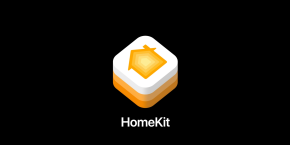
A few months ago, I reviewed Qingping’s e-ink temperature tracking device. I loved the look of it, as it didn’t follow the trend of high-resolution screens. For the past few weeks, I’ve had Qingping’s Air Monitor Lite, and it brings another unique style to HomeKit.
HomeKit Weekly is a series focused on smart home accessories, automation tips and tricks, and everything to do with Apple’s smart home framework.
The design
The first thing that stands out to me about the Qingping Air Monitor Lite is the retro look at brings to a desk or table. It uses an LCD screen but almost looks like it’s from another decade. It has a ‘squatty’ body style, so it breaks the mold of flat square-looking devices. On the back, you’ll find a USB-C charging cord and a power button. It can be run off a battery, but if you have a spare outlet, you can use the included USB-C to USB-A cable to keep it fully charged. Inside the Qingping app, you can customize a few of its settings based on when it’s on battery power vs. fully charged.

On the top, you’ll find a slider where you can rotate the display through its various metrics. The device can track temperate, humidity, CO2, and air quality (PM2.5 and PM10).
Setup and configuration
Once you get it unboxed and charging, you can proceed with setup and configuration. You can start with scanning the HomeKit code that’s on the bottom of the device in the Home app. The initial setup went off without a hitch. Once that’s done, you’ll need to download the Qingping iPhone app in order to update firmware and adjust your settings.
I initially ran into a problem trying to update the firmware, but I deleted the device out of HomeKit, readded it, and then it worked without problems. The device defaults to Celsius, so you’ll want to manually change it in the Qingping app if you want to use Fahrenheit. The Qingping app is also where you can customize how it operates when on power vs. battery, what the ‘screen saver’ displays, and export your data.

Using HomeKit with Qingping Air Monitor Lite
Of course, I love HomeKit, so I’ll use the device in the Home app unless I need to update it or adjust a few settings. Once you assign it to a room in your HomeKit environment, you’ll start tracking temperature, air quality, CO2 levels, and humidity in that room. If you have HomeKit enabled fans or air purifiers, you can build HomeKit automations to automatically turn them on based on the readings from the Qingping Air Monitor Lite. At this point, I am tracking air quality in every room in my house, so I feel quite confident that the air my family is breathing on a day-to-day basis is healthy. I am still shocked at the differences that various rooms in my house report on temperature as well. Rooms that are at the end of my heating and air condition duct run can easily be 3 degrees different from rooms at the beginning.
Wrap up on Qingping Air Monitor Lite
Overall, the Qingping Air Monitor Lite is a fun device. It looks like a nice combination of retro but minimal at the same time. I love that it includes a rechargeable battery, uses USB-C, and looks perfect with everything else on my desk. It’s not the cheapest HomeKit device for tracking air quality, but it might be the best looking.
FTC: We use income earning auto affiliate links. More.







Comments